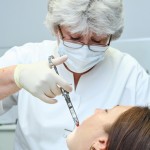
This is a critical appraisal of a Cochrane review first published in December 2010. The appraisal was prepared under the auspices of the American Dental Associations Centre for Evidence-based Dentistry The objective of the Cochrane review was to determine if adjusting the pH of lidocaine had any effect on pain resulting from non-intravascular injections in [read the full story…]


